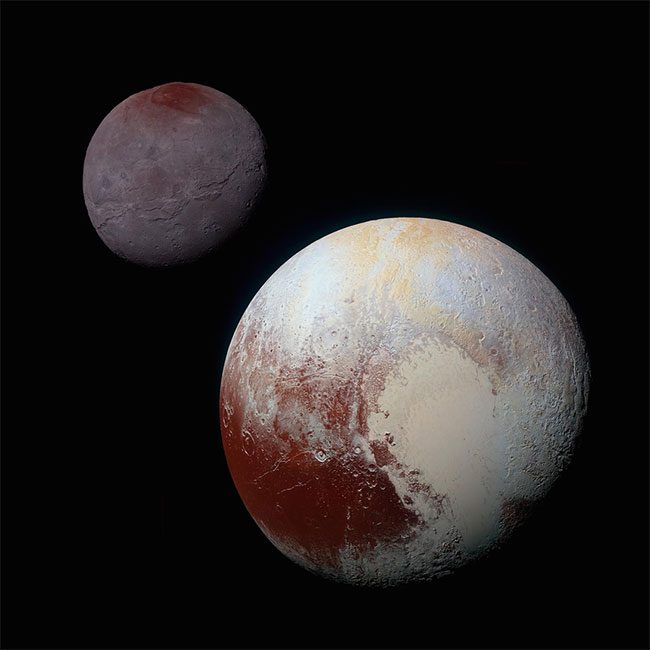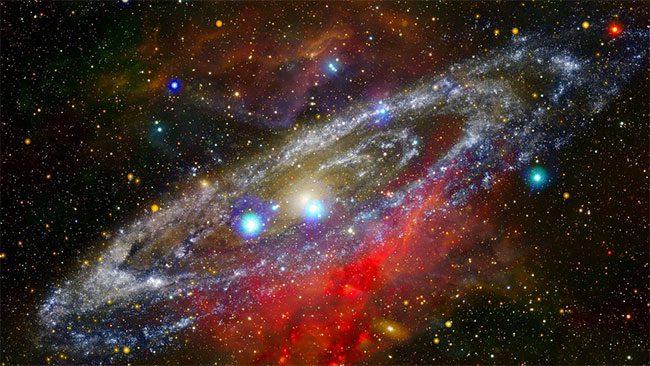Located over 6.4 billion kilometers from Earth, Pluto—a distant planet in our Solar System— is believed to hide a shocking secret: there are billions of brilliant diamonds existing on this planet.
Hidden Diamonds on Pluto
Diamonds on Earth are formed from graphite under high temperature and pressure. It is generally thought that this process takes millions to billions of years. However, on Pluto, this process may be more complex due to the completely different temperature and pressure conditions compared to Earth.
Through research on Pluto, scientists have discovered a phenomenon known as “diamond rain.” Pluto’s atmosphere contains nitrogen and methane, gases that can form ice crystals under extremely cold conditions. Over time, these ice crystals fall to Pluto’s surface, where they are subjected to extremely high pressure and temperature, transforming into diamonds.
To the surprise of scientists, they found that diamonds form on Pluto faster than on Earth. This implies that the number of diamonds formed on Pluto could exceed that on Earth within the same timeframe.

A possible explanation is that the climatic conditions on Pluto accelerate the diamond formation process. Pluto’s extremely cold and thin atmosphere may cause nitrogen and methane to crystallize faster than what occurs on Earth. Additionally, geological activity on Pluto may play a role in promoting diamond formation.
This discovery has had a profound impact on the scientific community. Firstly, it enhances our understanding of the extraterrestrial world. Previously, Pluto was often thought to be a cold and desolate planet with no interesting features. However, now that we have discovered these hidden giant diamonds, we begin to think about how they formed, providing us with broader insights into exploring other planets in the universe.
This discovery also has significant implications for the diamond industry on Earth. If diamonds form on Pluto much faster than on Earth, it means that Pluto could provide a potential resource of diamonds. Of course, we still face significant economic and technical challenges in extracting and utilizing these resources.

The first challenge in extracting diamonds on Pluto is the high development costs. Pluto is very far from Earth, making the transportation costs for mining equipment and workers very high. Additionally, the harsh climate, extremely low temperatures, and pressure on Pluto also increase the difficulty and costs of development.
Transportation of Materials is Extremely Challenging
The distance between Pluto and Earth poses a significant challenge. Based on its closest approach to Earth, the average distance between Pluto and Earth is about 6.4 billion kilometers. Even with the fastest space probes currently available, it can take many years, or even decades, to reach Pluto. This not only means extremely high transportation costs but also requires long-term space mission planning to ensure safety and stability throughout the journey.
The harsh environmental conditions on Pluto are also one of the obstacles to transporting diamonds. Pluto has a very harsh climate with extremely low surface temperatures averaging around -230 degrees Celsius, along with strong radiation and disturbances from cosmic dust. This means that any spacecraft or machinery used to transport diamonds must be capable of withstanding extreme cold and radiation. More importantly, since there is almost no atmosphere on Pluto, there cannot be any means to provide deceleration and landing support for spacecraft, making diamond transportation reliant on very advanced flying technology and equipment.
The diamond resources on Pluto are widely distributed and could meet Earth’s demand. However, due to transportation cost constraints and resource utilization limits, efficiently extracting and transporting these diamond resources from Pluto to Earth is a challenging task. Furthermore, because diamonds are rare precious metals, unlike other mineral resources on Earth, stricter security measures must be implemented to prevent loss and theft of diamond resources during transportation.

The environment on Pluto is extremely harsh, and its geological and crustal structure is very different from that on Earth. Currently, our understanding of Pluto is still relatively limited, and we lack the technology and equipment for mining Pluto’s minerals. Therefore, achieving the goal of diamond extraction will require significant investment in research and development funds as well as addressing technical issues in harsh conditions.
Despite these challenges and limitations, scientists remain undeterred. As technology continues to advance, our exploration of the universe will delve even deeper. New generations of probes will be more advanced, better adapted to harsher environments, and capable of providing more valuable insights into Pluto and other celestial bodies.
However, whether we ultimately have the courage to reach Pluto remains uncertain, but there is no doubt that the universe is filled with countless wonders and treasures. The mysteries of this world will eventually be revealed through humanity’s relentless exploration, whether on Earth or at the edge of the universe; all our efforts are directed towards understanding and sharing the beauty of this vast cosmos.





















































